Behind their research on topics ranging from mass incarceration to the brain and lungs to delivery robots, five experts and scientists at Boston University have received Faculty Early Career Development Program (CAREER) awards from the National Science Foundation (NSF) to advance scientific research in their fields. The researchers receiving the awards are also laying the foundation for the next generation of scientists by using the funding to support students and youth educational programs and to diversify STEM.
A respected program that is highly competitive, NSF CAREER awards mark a significant achievement for early-career scientists. The Brink caught up with each of BU's latest award recipients to see what they are working on.
Jessica Simes
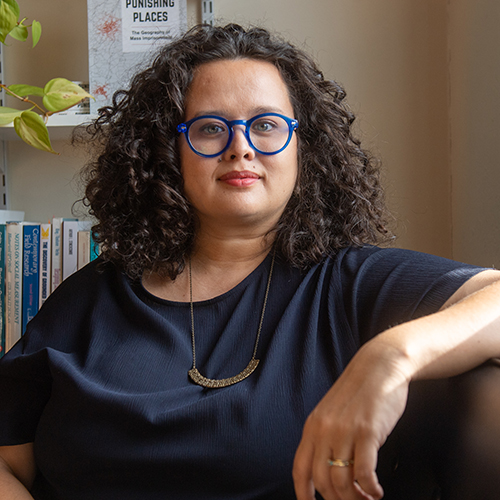
The United States has the highest incarceration rate in the world, a sobering statistic that has been in the making since the 1970s, when federal policies lengthened time in prison and sought tougher sentencing on crimes. Strikingly, studies have found that Black Americans are six times as likely to be incarcerated as white people, and about three times as likely as Latino/a populations.
Jessica Simes, assistant professor of sociology at the College of Arts & Sciences, studies racial inequality, mass incarceration, and the social structure of cities, uncovering the often hidden patterns and reverberating impacts policing and imprisonment has had on communities. She specifically studies mass incarceration based on zip codes, and has found that incarceration has changed across the 50 years of mass imprisonment in the US: In the 1970s and 1980s, incarceration rates for both jail and prison were very concentrated in large urban cities. Today, rates are highest in small cities and communities outside of the urban areas.
Her NSF CAREER award will support a set of research projects and educational initiatives that explore the underlying causes and effects of mass incarceration within communities and neighborhoods across the United States.
"Mass incarceration as a collection of policies and practices remains one of the most important ways we see how structural racism and social inequality persist as a result of public policy," Simes says.
This research is a culmination from when Simes was in graduate school, noticing that much of the existing research underappreciated the role that place-neighborhoods and community conditions-helped explain the causes and consequences of mass incarceration. This eventually led to her book, titled Punishing Places: The Geography of Mass Imprisonment, and this CAREER project.
Her objective is to examine how disparities in residential conditions, like housing, segregation, and economic factors, contribute to differences in incarceration rates and outcomes. The project will also explore how various interconnected aspects of the criminal justice system, ranging from police interactions to imprisonment, cumulatively affect community well-being and political participation. Additionally, Simes is starting the Open Justice Lab, which will facilitate the collection, processing, and analysis of data, accompanied by an interdisciplinary educational program consisting of courses, practicums, and symposia. She hopes that the research and educational components will boost participation of underserved students in STEM fields, and offer valuable insights for policymakers, community-based initiatives, and the general public.
"By the end of the project, I hope to provide new insights into the role of place, race, and inequality in high rates of and disparities in incarceration, and also new understandings of how community-level exposures to the criminal justice system matter for health and political participation," she says. "I am passionate about using this award to build bridges: bringing together social science and data science, practitioners and researchers, and universities and community leaders, and, in doing so, we will collectively identify critical research needs, share technical and subject-matter expertise, and create meaningful and impactful research that can inform policy reform and social change."
Michael Economo
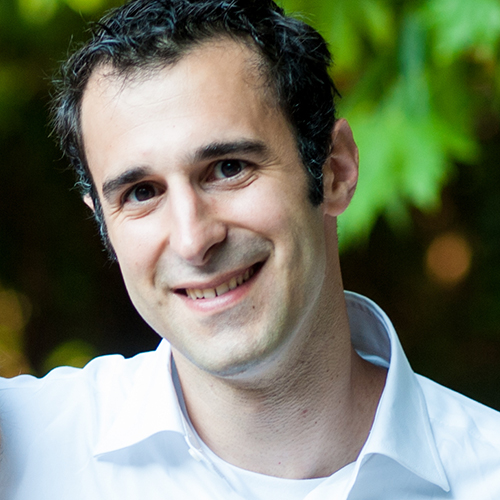
Our brains are responsible for all of our movements, even when we don't realize it. Whether you're walking down the street in Boston, riding a scooter or bike, or using a wheelchair, you're probably not thinking about all of the ways your body is moving-fingers, toes, legs, feet, blinking eyelids, and so on. But understanding exactly how the brain controls movement is one of the biggest questions in neuroscience that Michael Economo, assistant professor of biomedical engineering at the College of Engineering, is trying to answer.
"A major output of the brain is movement," Economo says. There are high-level systems that are responsible for movements that require more planning and execution-tasks that require the brain to combine a ton of information to do the movements that get you where you want to go. And there are low-level systems that translate to automatic reflexes and simpler movements, like when a doctor taps your knee to make your leg swing. With his CAREER award, Economo is investigating how high- and low-level circuits work together to control motor movements.
He studies the structure and function of neural circuits in the brain that control movement using optical, electrophysiological, and genetic tools that illuminate the structure of the circuits in mouse models.
"Motor control is a combination of complicated information, and we want to figure out how the messages are coming together and then producing movement," he says. He and his team use very tiny electrodes that are implanted in the brain of mice-a probe thinner than human hair, small enough that a mouse would be unaware of its presence. This allows them to record the activity of neurons activated by specific tasks and see what changes over time. They also use complex tools like optogenetics to target specific neuron networks, allowing them to turn different networks on or off, and light up regions of activity. And the more scientists understand motor activity at the neuron level, Economo says, the closer we can get to creating more effective therapies for neurological disorders that impact motor movements, like ALS and Parkinson's.
"There are foundational problems that need to be solved before therapies for these brain diseases can be more effective," he says. He and his team are also building a curriculum for K-12 students to learn about what labs like his do, and plan to bring students into the lab for tours and hands-on activities, like using electrode devices and materials from Backyard Brains, an organization that makes neuroscience accessible to classrooms.
Renato Mancuso
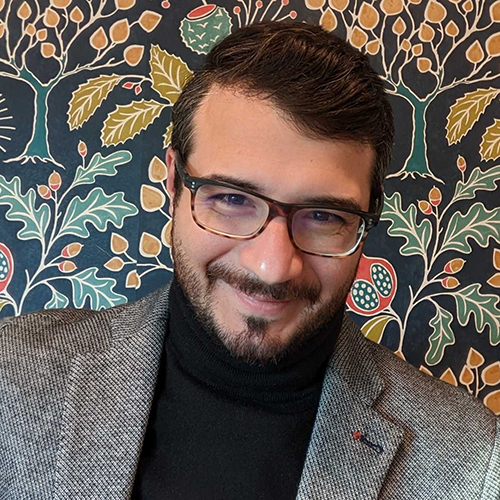
When Renato Mancuso was eight years old, his father brought home one of the first PCs in their small neighborhood in Sicily: a shiny Intel 386 machine. It was a finicky and unpredictable machine, but it started to teach him how computers work.
Now, Mancuso, assistant professor of computer science at the College of Arts & Sciences, directs the Cyber-Physical Systems Lab, which focuses on computers that interact with the physical world in a substantial way-like robotic surgery and diagnostic machines, unmanned drones and aircrafts, and cars with driver-assistance features. For all of these tasks, time is of utmost importance-a computer needs to make a decision, and make it fast, to properly perform a task accurately and safely. With the NSF CAREER award, Mancuso is working to make time a controllable aspect of computing systems.
"If we want to have a shot at nuclear fusion, or to control a self-landing rocket, or a flying drone on a remote planet, we need to empower our computers to make decisions without human intervention and at inhuman timescales," Mancuso says.
As computing systems become more complex and overloaded with data, the time it takes to move data has become more and more unpredictable, he says, because the time it takes depends on factors beyond the central processing unit, or CPU, of one computer.
He and his team are working to embrace the growing complexity of modern computing systems, "and restore direct control over the timeliness of our processes with a leap toward knowledge-driven system management," he says. This means devising and implementing techniques that systems can use to autonomously collect and leverage information about the interactions between time-sensitive applications and complex hardware. The goal is to make systems self-aware of what it means to run on time and what actions they can take to ensure that is the case.
"If we're able to observe, understand and predict the interplay between applications and underlying hardware, and if we are able to enact knowledge-driven management policies at every intersection of our complex memory subsystem, then restoring control over the timeliness of our safety-critical workloads becomes possible," Mancuso says.
This involves finding new ways to upgrade the hardware of devices, without completely starting from scratch. In the long term, he wants to establish the philosophy and methodology behind time-sensitive systems, and influence the next-generation of computer scientists through education and curriculum that introduces timeliness as a fundamental design dimension.
Hadi Nia
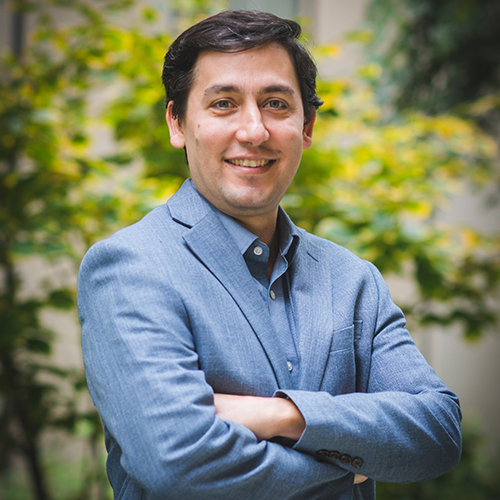
"The lung is one of the most mechanically active and dynamic organs in the body that is exposed to cyclic deformations from a combination of breathing cycles and pulsatile blood flow," says Hadi Nia, an assistant professor of biomedical engineering at the College of Engineering. He works at the intersection of physics, biology, and immunology to explore the dynamics of the lungs. With his NSF CAREER award, Nia will be studying lung function in real time, at the cellular level, using a tool developed in his lab, called crystal rib cage.
"While the traditional function of the lung is assumed to be gas exchange, the major role of lung immunity, and how it is affected by the mechanics of breathing and blood circulation, have recently become more evident," he says.
Crystal rib cage is a transparent rib cage that matches the geometric and physical properties of the intact native rib cage of mice. The crystal rib cage allows, for the first time, to visualize the dynamics of the mouse lung in real time at a cellular resolution. This will allow him to explore, and hopefully answer, outstanding questions in the field, like how are the blood flow and oxygen transport at the capillary level affected by the breath's expansion and contraction of alveoli? And how do immune cells interact with the capillaries, given that immune cells are similar in size and sometimes even larger than capillaries?
"We are hoping that by utilizing this transformative technology, and the fundamental insight that it provides, we have a broad impact and immediate applications in deeper understanding of the role of mechanics in lung development, aging, exercise, and pathologies," he says.
He and his team also developed an educational plan to inspire and train students from K-12 to graduate school to think conceptually about lung microphysiology. They made a "Lung Physiology Bootcamp" for Boston University's Summer Challenge, which is a residential summer program for high school students, with hands-on activities and other unique learning opportunities.
Alyssa Pierson
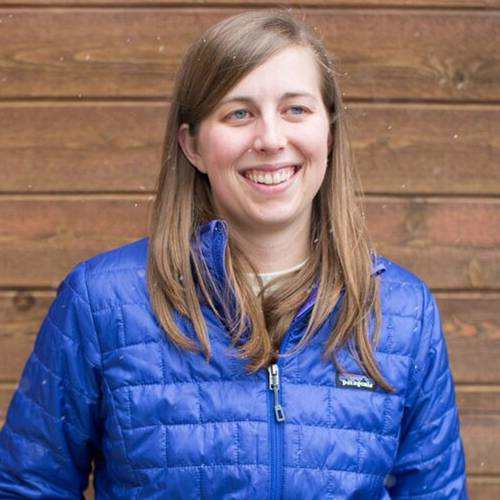
Imagine a future where a delivery robot arrives at your door, only to run into another delivery robot from a different company. Ideally, the robots should be able to figure out what to do when they encounter different robot models, older versions, or newer versions that might be operating under different rules. But that's not what tends to happen.
"We find that when robots encounter unknown situations, they might freeze or lock up," says Alyssa Pierson, assistant professor of mechanical engineering at the College of Engineering. "How do we design the new algorithms and control policies to make these robots more capable?"
Currently, most delivery robots have a human on the other end supervising and making sure this doesn't happen. But with more and more delivery robots out and about in the world from different companies, and with different sets of tools guiding them, autonomous robots will have to be able to encounter one another and navigate unfamiliar situations without freezing. With her CAREER award, Pierson is studying new types of robot interactions to create more complex behavior among multi-robot systems.
"If we look at what we need for these robots to integrate into our everyday life, we need the robots to respond naturally to humans as well as be a little more flexible and a little bit more capable when they come across unknown situations," she says. "For robots to cooperate with foreign robots, we need new tools for how the robots can interact with one another, how they can account for the fact that they need to cooperate, but they have no direct way to communicate that or direct way to plan."
She envisions robot teams that adapt and cooperate with others, ultimately making for safer and more complex teams of mobile service bots. There's a long way to go and a lot of ground to cover with single robots before we see a multi-robot world.
"It's a huge honor, it was really exciting to hear," Pierson says of receiving the CAREER award. "This is my first major grant as a young professor, I'm just excited to continue to do the research."
Patrick Kennedy contributed reporting.






